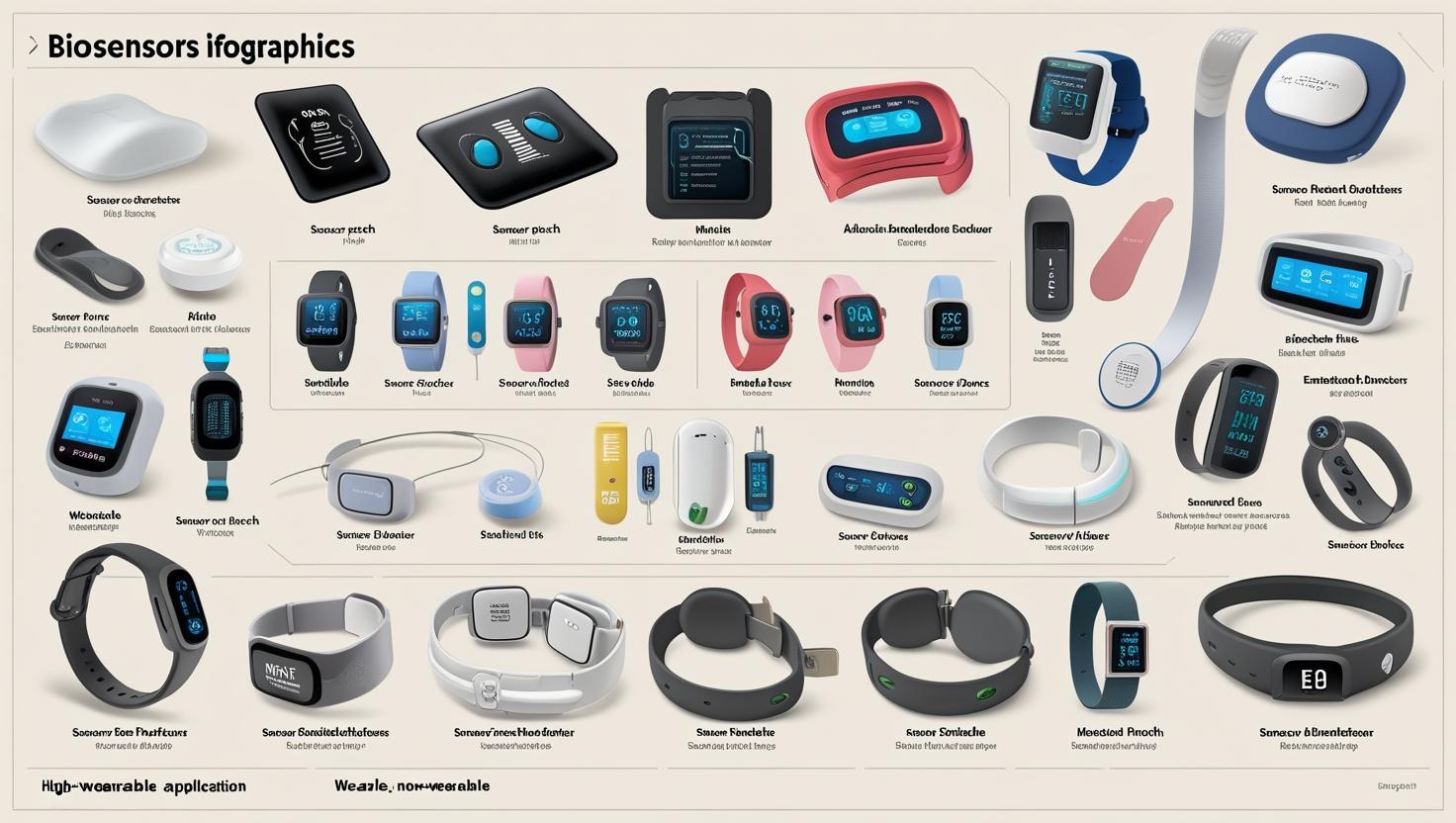The North America biosensors market is experiencing accelerated growth, driven by increasing demand for non-invasive diagnostic tools, the rise of wearable health devices, and expanding applications across sectors such as healthcare, food safety, environmental monitoring, and defense. With the region at the forefront of biotechnology innovation, personalized medicine, and digital health integration, biosensors have become indispensable to a range of clinical and industrial applications. Biosensors Industry worth $54.37 billion by 2030
What Are Biosensors?
Biosensors are analytical devices that combine a biological recognition element with a transducer to detect and quantify chemical substances or biological analytes. These devices are capable of delivering real-time, highly sensitive data and are widely used in medical diagnostics, glucose monitoring, pathogen detection, drug discovery, and more. In North America, biosensor development is closely tied to advances in nanotechnology, microfluidics, and artificial intelligence (AI).
Healthcare Leads Market Demand
The healthcare industry is the largest end-user of biosensors in North America. With the rise of chronic diseases such as diabetes, cardiovascular disorders, and cancer, there is growing demand for point-of-care (POC) diagnostics, continuous glucose monitors (CGMs), and remote patient monitoring systems. The U.S. alone has more than 37 million diabetics, creating a sustained need for reliable biosensor technologies.
Wearable biosensors—integrated into fitness bands, smartwatches, and patches—are also gaining popularity for real-time tracking of heart rate, oxygen saturation, body temperature, and stress levels. These innovations are revolutionizing personalized medicine, enabling earlier diagnosis, real-time intervention, and improved outcomes.
Role of COVID-19 and Digital Health Expansion
The COVID-19 pandemic served as a major catalyst for biosensor adoption in the region. Rapid antigen testing, home diagnostics, and viral load monitoring systems became critical tools in public health management. Post-pandemic, the emphasis on decentralized healthcare, at-home testing, and telehealth has sustained the demand for compact, affordable, and accurate biosensor devices.
In addition, the growth of digital health platforms and mobile medical apps is driving biosensor integration into cloud-based healthcare ecosystems. Startups and established tech firms alike are collaborating with medical device manufacturers to offer biosensor-enabled health tracking, AI-based diagnostics, and predictive analytics.
Download PDF Brochure @ https://www.marketsandmarkets.com/pdfdownloadNew.asp?id=798

Beyond Healthcare: Diversifying Applications
While healthcare remains the dominant driver, biosensors are gaining traction in non-medical sectors as well. In the food industry, biosensors are used to detect pathogens, contaminants, and spoilage indicators in real time, enhancing food safety and compliance with FDA regulations.
Environmental monitoring is another promising application area. Biosensors are being deployed to detect pollutants in air, soil, and water, including heavy metals, pesticides, and biological contaminants. With increased focus on climate resilience and clean energy, North American governments are funding smart sensing technologies to ensure sustainable urban development.
In the defense and security sector, biosensors are used for rapid detection of biological warfare agents, toxins, and chemical threats. These devices are critical for military readiness and public safety response systems.
Regional Dynamics: U.S. and Canada
The United States dominates the North American biosensors market, thanks to its strong R&D ecosystem, high healthcare expenditure, and supportive regulatory frameworks. The FDA’s fast-track approval pathways for diagnostics and digital therapeutics have accelerated market entry for new biosensor products.
Canada is also experiencing significant growth, particularly in medical diagnostics and environmental biosensing. Canadian research institutions and startups are increasingly focused on wearable biosensors and disease detection platforms, supported by federal health innovation grants and partnerships with U.S. firms.
Key Market Players
Key companies operating in the biosensors market include Abbott Laboratories (US), F. Hoffmann-La Roche Ltd (Switzerland), Medtronic (Ireland), Bio-Rad Laboratories, Inc. (US), DuPont (US), Biosensors International Group, Ltd. (Singapore), Dexcom, Inc. (US), Masimo (US), Nova Biomedical (US), Universal Biosensors (Australia), ACON Laboratories (US)
These companies are advancing sensor miniaturization, wireless connectivity, and AI-enhanced diagnostics to gain competitive advantage.
Technological Advancements Driving Innovation
The convergence of biosensing with nanomaterials, microelectromechanical systems (MEMS), lab-on-a-chip platforms, and machine learning algorithms is pushing the boundaries of what biosensors can detect and deliver. These advancements are enabling ultra-sensitive detection of biomarkers at the molecular level, earlier disease identification, and seamless data transmission to healthcare providers and cloud platforms.
Real-time, non-invasive biosensing—using saliva, sweat, interstitial fluids, or breath—represents the future of diagnostics and wellness monitoring, and North America is at the heart of this transformation.
Challenges and Market Constraints
Despite the positive outlook, the market faces some challenges. High R&D and manufacturing costs, stringent regulatory approval processes, data privacy concerns, and technical limitations in sensor stability and specificity can limit commercialization. There is also a need for interoperability across platforms and standardization of biosensor performance metrics to build user trust and clinical acceptance.
Outlook to 2030
The North America biosensors market is expected to continue its upward momentum, supported by rising chronic disease burdens, growing demand for personalized and preventive healthcare, and a robust innovation pipeline. As biosensors become smarter, smaller, and more integrated with digital health ecosystems, their role in reshaping diagnostics, monitoring, and public health will only grow.
By 2030, biosensors will likely be embedded in everyday life—from smartwatches and home test kits to environmental monitors and food packaging—making North America a global leader in biosensor adoption and innovation.
